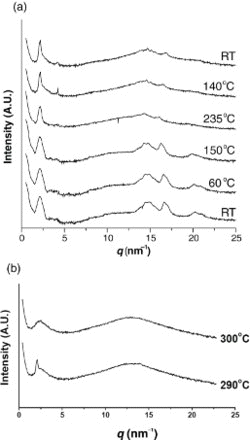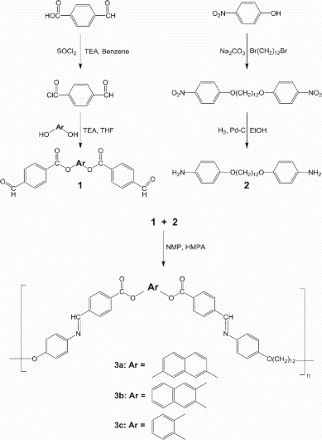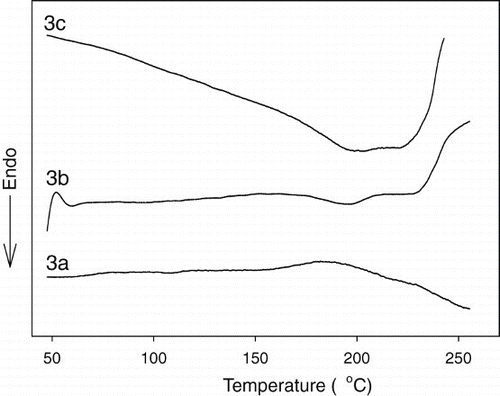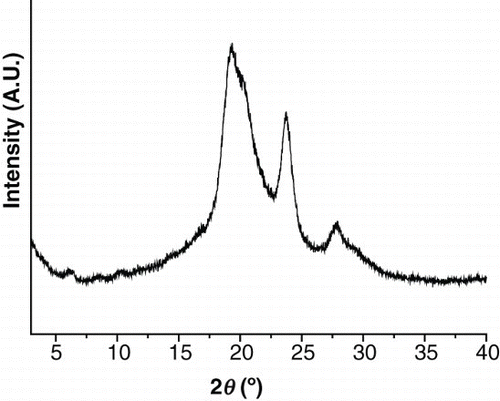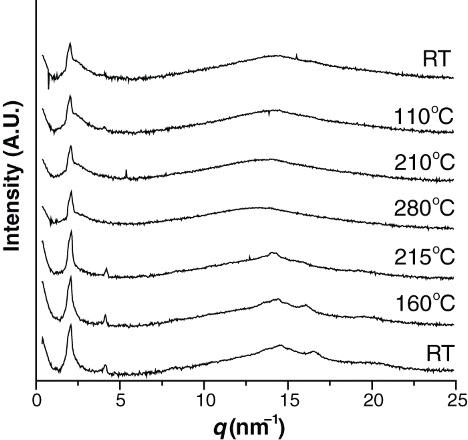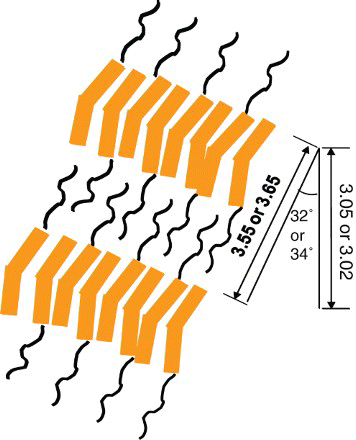Figures & data
Table 1 Yields, thermal transition temperatures, and enthalpy changes of the polymersa.
Figure 2. Cross-polarizing optical micrographs of polymer 3a (magnification×250): (a) T=240°C; and (b) quenched sample of the melt.
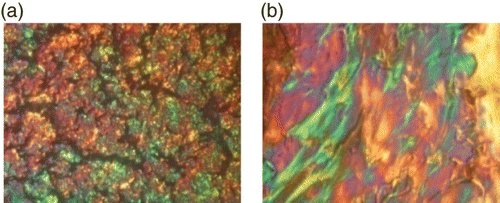
Figure 3. Cross-polarizing optical micrographs of polymer 3b (magnification×250): (a) T=150°C; (b) T=200°C; (c) T=220°C; and (d) after shearing at 250°C.
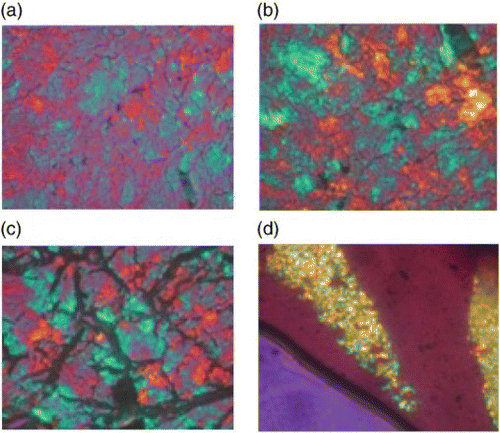
Figure 4. Cross-polarizing optical micrographs of polymer 3c (magnification×250): (a) T=150°C; (b) T=200°C; (c) T=250°C; and (d) after shearing at 250°C.

Figure 7. XRD patterns of polymer 3c at different temperatures: (a) heating to a moderate temperature so that thermal degradation would not occur and (b) heating to a high temperature so that the isotropic phase could be obtained.
